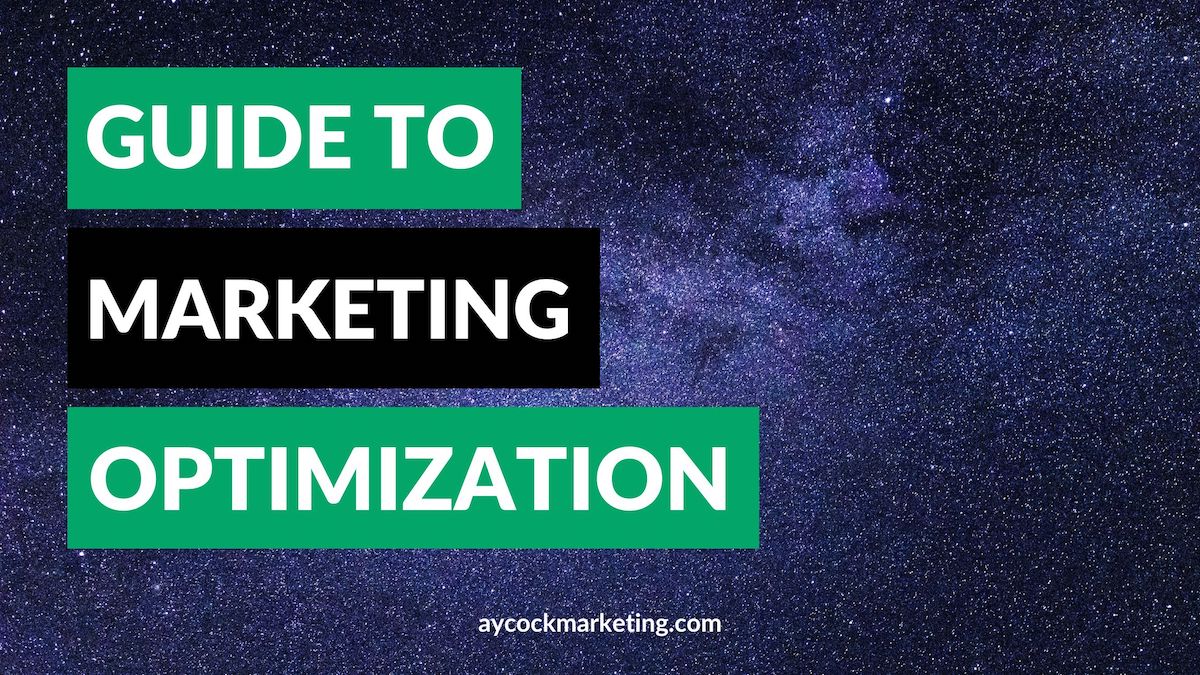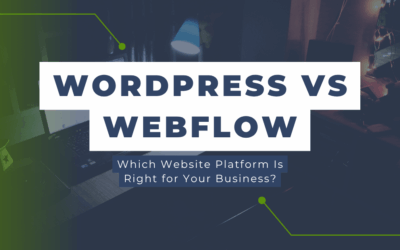As a small business owner, you likely wear many hats, from CEO to marketer to accountant. With so many responsibilities, it’s easy to get overwhelmed and let some things slide. However, one area you can’t afford to neglect is marketing optimization. What do we mean, “optimization”? We mean getting more juice squeezed from each lemon.
Marketing optimization simply means maximizing the effectiveness of your marketing efforts. This can be done through a variety of channels, including search engine optimization (SEO), paid social ads, paid search ads, your company’s website, email marketing, sales follow-up processes, word-of-mouth processes, and more. By optimizing each of these channels, you can increase your visibility, drive traffic to your website, generate leads, and ultimately grow your business.
Let’s dive into each of these marketing channels and discuss some tactical checklist items as well as common mistakes to avoid to help guide you.
Search Engine Optimization (SEO)
Search engine optimization, or SEO, is the practice of improving the visibility and ranking of your website in search engine results pages (SERPs). This very marketing effort is dedicated to optimization. Here are some tactical checklist items for optimizing your your company and website for search engines:
- Keyword research: Identify the keywords your target audience is searching for and incorporate them into your content.
- Content creation: Create high-quality, relevant, and valuable content that answers your target audience’s questions and addresses their pain points. Utilize AI tools like ChatGPT to come up with ideas and outlines for your content so you can save time.
- On-page optimization: Optimize your website’s metadata, such as title tags and meta descriptions, to accurately reflect the content on each page.
- Off-page optimization: Build high-quality back links from other reputable websites to increase your website’s authority and improve its ranking.
Common mistakes to avoid in SEO optimization include keyword stuffing, duplicating content, and neglecting mobile optimization. Avoid these to stay on Google’s good side.
Paid Social Ads Optimization
Paid social ads are ads that appear on social media platforms such as TikTok, Facebook, Instagram, Twitter, and LinkedIn. Here are some tactical checklist items for optimizing your paid social ads:
- Audience targeting: Define your target audience and use the platform’s targeting options to reach them effectively.
- Ad creative: Create eye-catching and compelling ad visuals and copy that resonate with your target audience.
- Ad placement: Choose the right placement options to ensure your ads are seen by your target audience.
- Ad budget: Set a realistic budget and monitor your ad spend to ensure you’re getting a good return on investment.
Common mistakes to avoid in paid social ads optimization include targeting too broadly, neglecting to A/B test ad variations, and ignoring ad performance metrics.
Paid Search Ads Optimization
Paid search ads, also known as pay-per-click (PPC) ads, are ads that appear at the top of (and throughout) search engine results pages when someone searches for specific keywords. Here are some practical checklist items for optimizing your paid search ads efforts:
- Keyword research: Identify the keywords your target audience is searching for and create ads around those keywords.
- Ad copy: Write compelling ad copy that includes the keyword and highlights your unique selling proposition.
- Landing page optimization: Create a landing page that is relevant to the ad and provides a clear call-to-action.
- Ad bidding strategy: Determine a bidding strategy that aligns with your business goals and monitor your ad spend.
Common mistakes to avoid in paid search ads optimization include using irrelevant keywords, creating vague ad copy, and sending traffic to a poorly optimized landing page.
Website Optimization
Your company’s website is often the first point of contact potential customers have with your business. Here are some CRO (conversion rate optimization) checklist items for optimizing your website:
- Site speed: Ensure your website loads quickly and is easy to navigate.
- Mobile responsiveness: Optimize your website for mobile devices, as more and more people are using smartphones and tablets to browse the web.
- User experience: Create a user-friendly website that provides valuable information and easy-to-find calls-to-action.
- A/B Testing: Use tools like FigPii and VWO to run experiments on your website and mitigate risking making the wrong changes to your website.
- Calls-to-action: Include clear calls-to-action that encourage visitors to take the next step in their customer journey.
Common mistakes to avoid in website optimization include neglecting mobile responsiveness, creating a cluttered and confusing website design, and failing to update your website regularly.
Email Marketing Optimization
Email marketing is a cost-effective way to communicate with your customers and prospects. Here are some tactical checklist items for optimizing your email marketing:
- List segmentation: Segment your email list based on demographics, behaviors, and interests to provide personalized content.
- Email design: Create visually appealing emails that are easy to read and engage your audience.
- Personalization: Use merge tags to personalize your emails and make them feel more personal.
- Subject lines: Write compelling subject lines that grab your audience’s attention and encourage them to open your emails.
Common mistakes to avoid in email marketing optimization include sending too many emails, neglecting to segment your email list, and using spammy subject lines.
Sales Follow-up Process Optimization
Following up with leads and prospects is crucial for converting them into customers. Here are some tactical checklist items for optimizing your sales follow-up process:
- Lead tracking: Use a customer relationship management (CRM) tool to track leads and monitor their progress through the sales funnel.
- Follow-up schedule: Create a follow-up schedule that is timely and appropriate for each lead’s stage in the sales funnel.
- Personalization: Personalize your follow-up communications based on the lead’s interests and behaviors.
- Follow-up metrics: Monitor your follow-up metrics, such as open rates and response rates, to gauge the effectiveness of your follow-up process.
Common mistakes to avoid in sales follow-up process optimization include neglecting to follow up with leads, using a one-size-fits-all approach to follow-up communications, and failing to track and analyze follow-up metrics.
Word-of-Mouth Process Optimization
Word-of-mouth marketing is one of the most effective forms of marketing, as it relies on satisfied customers to spread the word about your business. Here are some tactical checklist items for optimizing your word-of-mouth process:
- Customer satisfaction: Ensure your customers are satisfied with your products or services and provide exceptional customer service.
- Referral program: Create a referral program that incentivizes your customers to refer their friends and family to your business.
- Online reviews: Encourage your customers to leave positive reviews on popular review sites like Yelp and Google.
- Social media: Use social media to engage with your customers and amplify positive word-of-mouth about your business.
Common mistakes to avoid in word-of-mouth process optimization include neglecting to prioritize customer satisfaction, failing to incentivize referrals, and ignoring negative online reviews.
Other Marketing Channels Optimization
There are many other marketing channels you can leverage to reach your target audience, including influencer marketing, content marketing, and event marketing. Here are some tactical checklist items for optimizing these channels:
- Influencer marketing: Identify the right influencers who align with your brand values and target audience, and work with them to promote your products or services.
- Content marketing: Create valuable and informative content that educates your target audience and positions your business as an industry leader.
- Event marketing: Host or participate in events that provide value to your target audience and help build relationships with potential customers.
Common mistakes to avoid in other marketing channels optimization include choosing the wrong influencers or content topics, failing to measure the ROI of your efforts, and neglecting to follow up with event attendees.
In conclusion, optimizing your marketing efforts across all channels is essential for small business success. By following these tactical checklists and avoiding common mistakes, you can ensure your SEO, paid social ads, paid search ads, website, email marketing, sales follow-up process, word-of-mouth process, and other marketing channels are all working together to reach and engage your target audience. Remember to monitor your metrics, make data-driven decisions, and stay up-to-date on the latest trends and best practices in digital marketing.




